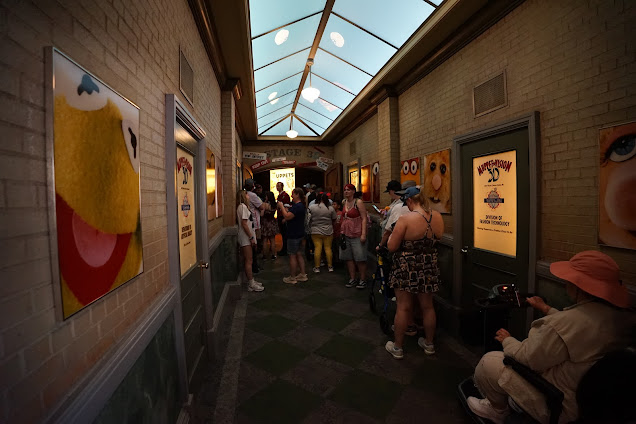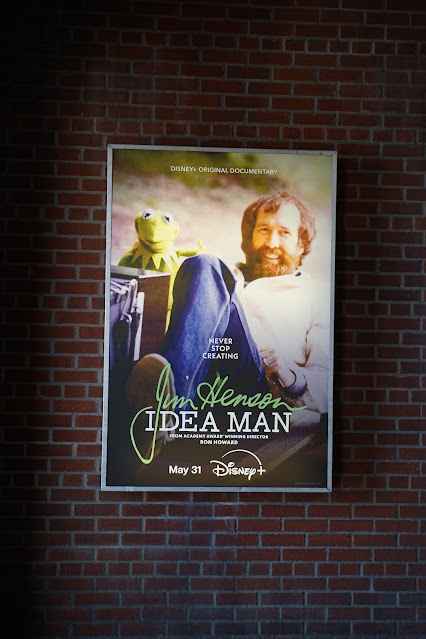With all the goings on recently with Reedy Creek, and Disney vs. Desantis battle, I thought it would be worthwhile to take a look at what is special about Reedy Creek, and why discarding the "special arrangement" is not going to be helpful in returning Walt Disney World back to the historical quality that we are used to.
First some history.
By 1964, affiliates of what would eventually become the Walt Disney World Co. began purchasing undeveloped cattle land in Osceola and Orange counties. In 1966, the company filed a petition seeking authorization to establish a drainage district encompassing 27,000 contiguous acres. The request was granted, establishing the drainage district and authorizing it to exercise the specific, limited powers granted by Ch. 298, F.S.
The property was so isolated, in the far reaches of Orange and Osceola counties, that the nearest power and water lines were 10-15 miles distant. Orange and Osceola counties lacked the resources and services necessary to host the planned development. In order to deal with this challenge, the drainage district was further expanded when The Florida State Legislature created the Reedy Creek Improvement District (RCID), which recast the drainage district as a special taxing district to administer and oversee municipal services for the 47 square miles of the future Walt Disney World Resort.
 |
Governor Claude Kirk signing the RCID bill at the Governor's mansion - Tallahassee, Florida. Photographed on May 12, 1967 |
In 1967, the Legislature passed the special act, codified as Ch. 67-764, Laws of Florida, which created the Reedy Creek Improvement District (RCID). Florida's then-governor Claude Kirk officially established the Reedy Creek Improvement District (RCID) on May 12, 1967, when he signed the measure into law. He approved the incorporation acts for Bay Lake and Reedy Creek, two incorporated cities in the district, on the same day. Around 1970, the City of Reedy Creek changed its name to the City of Lake Buena Vista. The new district would have the same jurisdiction and accountability as a county government to establish and oversee municipal services.
 |
Camera operator filming Roy Disney speaking at the Governor's mansion for the signing of the Disney bill - Tallahassee, Florida Photographed on May 12, 1967 |
The law stipulated that the cost of providing common municipal services like power, water, roads, and fire protection would be entirely borne by the landowners inside the new taxation area, namely the Walt Disney World Resort. The district served as and still serves as a practical means of preventing Orange and Osceola County residents from bearing the cost of these services, taxes, and costs.
Reedy Creek Who?
From 1964 until around 1990, RCID did its work for the most part quietly and in the background. Building roads, maintaining infrastructure, and generally supporting the development of the 27,000 acres. Other than the occasional scandal, there wasn't much interest in what RCID was, other than by people who either worked for the district or were deep into all things Disney.
The Disney Decade...
And then came January 14th, 1990 when Walt Disney Co. Chairman Michael Eisner unveiled a 10-year expansion plan at Lake Buena Vista in Walt Disney World - in what would become known as the "Disney Decade" speech. Eisner laid out plans to expand Walt Disney World in a number of ways including adding a fourth theme park, and timeshare resorts which would ultimately become the Disney vacation club concept. Eisner said at the time that the idea was, 'The next 10 years we're going to do nothing less than re-invent the Disney theme park and resort experience, and not just here in Florida, but in all our parks and resorts ... By the year 2000, we expect to host over 100 million guests each year in Disney theme parks and resorts around the world."
The "Disney Decade" would unleash a torrent of development across the Walt Disney World property, but beyond the workload that so much development would create for RCID on the property, there was a unique little change, which would directly impact the quiet way that RCID had always operated.
 |
| People using water sprites near the Lake Buena Vista Shopping Village circa 1975. Photograph by Eric Tournay Florida Division of Tourism. |
Eisner's Parents' Manhattan Apartment, and Eisner's taste for architecture.
When Eisner's parents moved into a Manhattan condominium designed by Robert A.M. Stern in the early 1970s, Eisner's association with one of the elites of architecture was established. Nearly two decades later, Stern created the Feature Animation Building, which debuted in 1994, while serving on Eisner's board of directors for the Walt Disney Company. Eisner, who was completely enthralled with the field of architecture, hired renowned architects to create themed hotels and office buildings for Eisner's "Disney Decade" projects.
During Eisner’s tenure Robert A.M. Stern, was the architect for Disney's Yacht Club Resort, Disney's Beach Club Resort, Disney's BoardWalk, and the Casting Center. Stern along with Jaquelin Robertson, also served as the master planner for Disney's town of Celebration. Additional buildings in Celebration were designed by Philip Johnson, Charles Moore, Cesar Pelli, and William Rawn. In addition, the Italian architect Aldo Rossi, designed Celebration Place, the office complex next to Celebration.
Eisner also engaged a number of other high-profile architects, a veritable who's who of the architecture world, for other Disney projects including Michael Graves, to create the Dolphin and Swan hotels. Arquitectonica of Miami to design Disney's Pop Century Resort and Disney's All-Star Resorts. The New York firm of Gwathmey Siegel and Associates were the architects for the convention facility at Disney's Contemporary Resort and for Bonnet Creek Golf Club. Peter Dominick, a Denver architect, designed Disney's Animal Kingdom Lodge, and Disney's Wilderness Lodge. Disney's Grand Floridian Resort & Spa was designed by Wimberly, Allison, Tong, and Goo in conjunction with Walt Disney Imagineering. Fugelberg Koch & Associates of San Diego was responsible for the design of Disney's Caribbean Beach Resort, Disney's Port Orleans Resort, and Disney's Old Key West Resort. David Rockwell of New York handled the Design of Downtown Disney West Side. Disney's Wide World of Sports Complex was designed by David Schwarz of Washington, D.C. Lastly, Disney's Coronado Springs Resort, was designed under the direction of Graham Gund Architects of Cambridge, Mass., working along with Walt Disney Imagineering. Gund also was the architect for the Disney Vacation Club in Vero Beach.
In 1990 there was an article in the New York Times Magazine by Paul Goldberger entitled "Disney deco; and now, an architectural kingdom" The
article put Eisner's architectural sensibilities this way;
"Once upon a time there were buildings and there was architecture, and the two had very little to do with each other. There was a great kingdom called Disney, and in it were many, many buildings, and while most of them were fun to look at, they were not architecture. And then one day a new prince named Michael came to rule the kingdom, and he decreed that architecture could be just as much fun as buildings. And so the kingdom filled up with hotels named after swans and dolphins, and office buildings with caryatids modeled after the seven dwarfs and doorways shaped like Mickey Mouse ears. And everybody lived happily ever after."
Well - not quite. Eisner had one other area of the company that he thought could use an architectural treatment, Reedy Creek.
 |
| Photo by Michael Rivera, CC BY-SA 4.0 <https://creativecommons.org/licenses/by-sa/4.0>, via Wikimedia Commons |
Making a statement: Back-of-house support facility visible to park visitors..
Prior to 1994, RCFD originally
operated the firehouse out of trailers. It was maybe three or four trailers along with a boardwalk that ran between them all. Eventually, the trailers were upgraded to a station that had plain bays and walls made of concrete blocks and corrugated metal that give it the appearance of an old industrial shop. This is the same type of prefab metal support buildings that you can find anywhere back-of-house on the Disney Florida property. But Architects: Venturi, Scott Brown and Associates, Inc. in association with Schenkel Shultz Architects were engaged by Eisner to design the first back-of-house support facility visible to park visitors at Walt Disney World, The Reedy Creek emergency services headquarters. The 22,511-square-foot building, built at a construction cost of $2,500,000 was a bold statement, and a massive change from the way that Disney had always done its best to hide some of the more mundane aspects of running the resort. The building was built as a flashy public state-of-the-art fire rescue center, complete with living quarters, administrative offices, and a 911 communications center. The exterior front of the building is decorated with porcelain enamel panels in the patterns and colors of red bricks and Dalmatian dogs, which have been scaled up to adorn the exterior. The sweeping curve of the front facade acknowledges and accommodates the curve of the drive where the fire trucks quickly leave the complex. It was a statement in more ways than one.
 |
| RCID Administration Building - Photo by Asher Heimermann, CC BY-SA 4.0 <https://creativecommons.org/licenses/by-sa/4.0>, via Wikimedia Commons |
Reedy Creek Improvement District Administration Building.
By the late 1990s, Eisner wasn't done with his taste for architecture and soon turned his attention to the work of German-American architect Helmut Jahn. Among Jahn's many notable works is the Suvarnabhumi Airport in Bangkok, Thailand, the Thompson Center in Chicago, One Liberty Place in Philadelphia, and the Sony Center on Potsdamer Platz in Berlin, Germany. Jahn's architectural style was postmodernist with high-tech stylizations, and Eisner was drawn to his designs. According to RCID's financial director Ray Maxwell, despite the fact that Reedy Creek Improvement District was a separate governmental organization, Eisner personally approved Jahn's appointment but left the final decision up to the district. Construction was soon completed, and in 1997, Reedy Creek had a new and very visible Administration building right in the heart of Lake Buena Vista at 1900 Hotel Plaza Boulevard. The building was a straightforward square layout that has its corners chamfered to form an ascending facade, and the "open" corners have been replaced with a planted steel trellis that nevertheless shows the general shape of the original cubic composition.
 |
| The building opened as the Walt Disney World Preview Center in 1970 and currently houses the Amateur Athletic Union. It is located directly northeast of the Reedy Creek Improvement District office on Hotel Plaza Blvd. Photo by Asher Heimermann, CC BY-SA 4.0 <https://creativecommons.org/licenses/by-sa/4.0>, via Wikimedia Commons |
The location of where RCID's new administration building was built was strategic on many levels. First, it was built next door to the old original Walt Disney World Preview Center building (Now home to the Amateur Athletic Union (AAU), which has the distinction of being the very first building ever built on the property. Second, The location on Hotel Plaza Boulevard (originally known as Motor Inn Plaza) was very much the main entrance and front door to the property. Hotel Plaza Boulevard serves as the main way from the very busy 535 down to the former Village Marketplace and is located in one of the most visible places possible, with an average of 25,000 vehicles passing daily. Lastly, this location and building were a change from the former invisibility of RCID. No longer would RCID operate in the shadows, working out of trailers, but would rather have a glitzy administration building designed by a world-class architect right in the middle of the main entrance for Walt Disney World.
 |
| WDW Welcome Sign at Hotel Plaza Boulevard and 535. Photo by Michael Rivera, CC BY-SA 4.0 <https://creativecommons.org/licenses/by-sa/4.0>, via Wikimedia Commons |
Coming up in part two - the vital role Reedy Creek plays in Disney's Success..










































